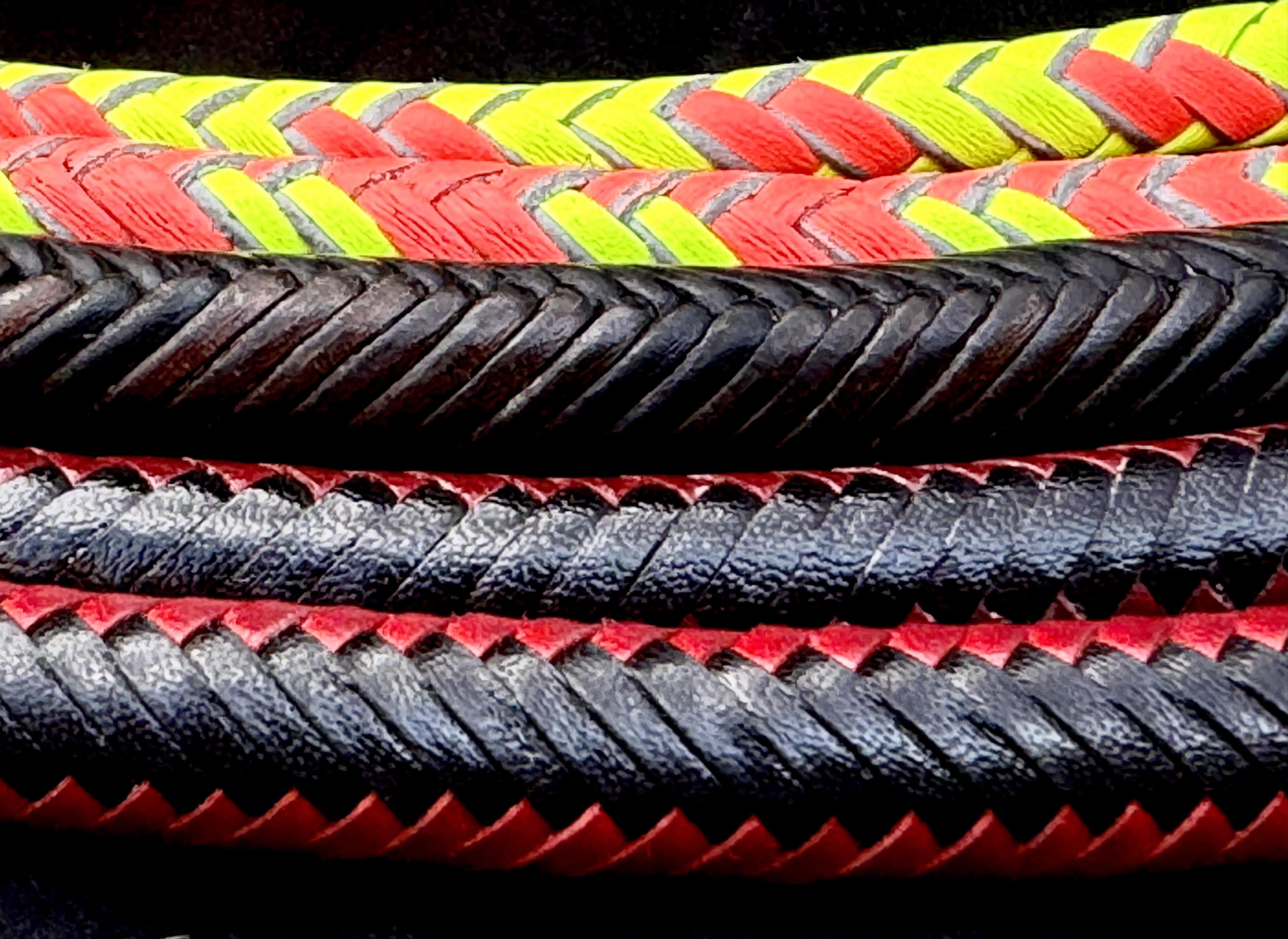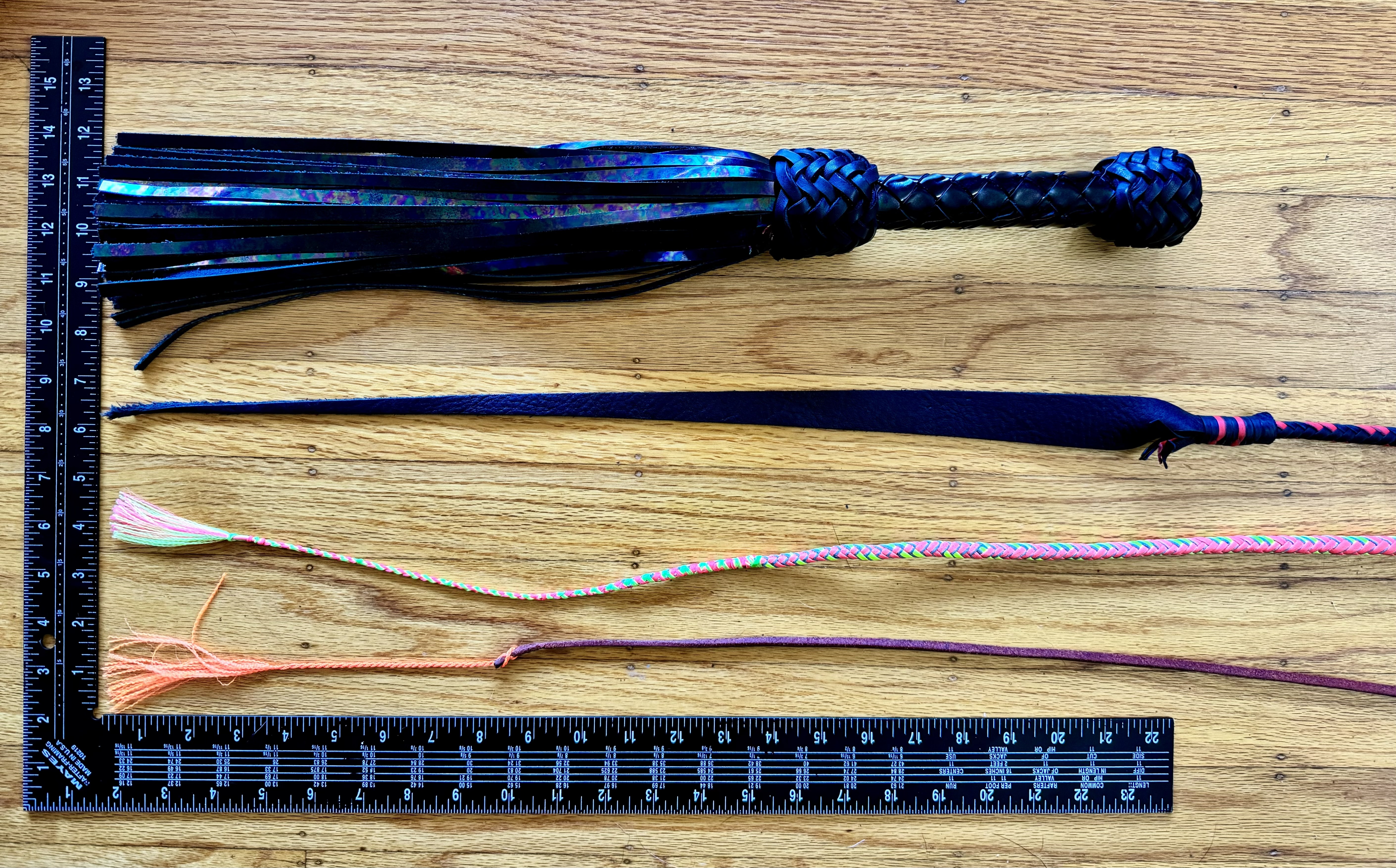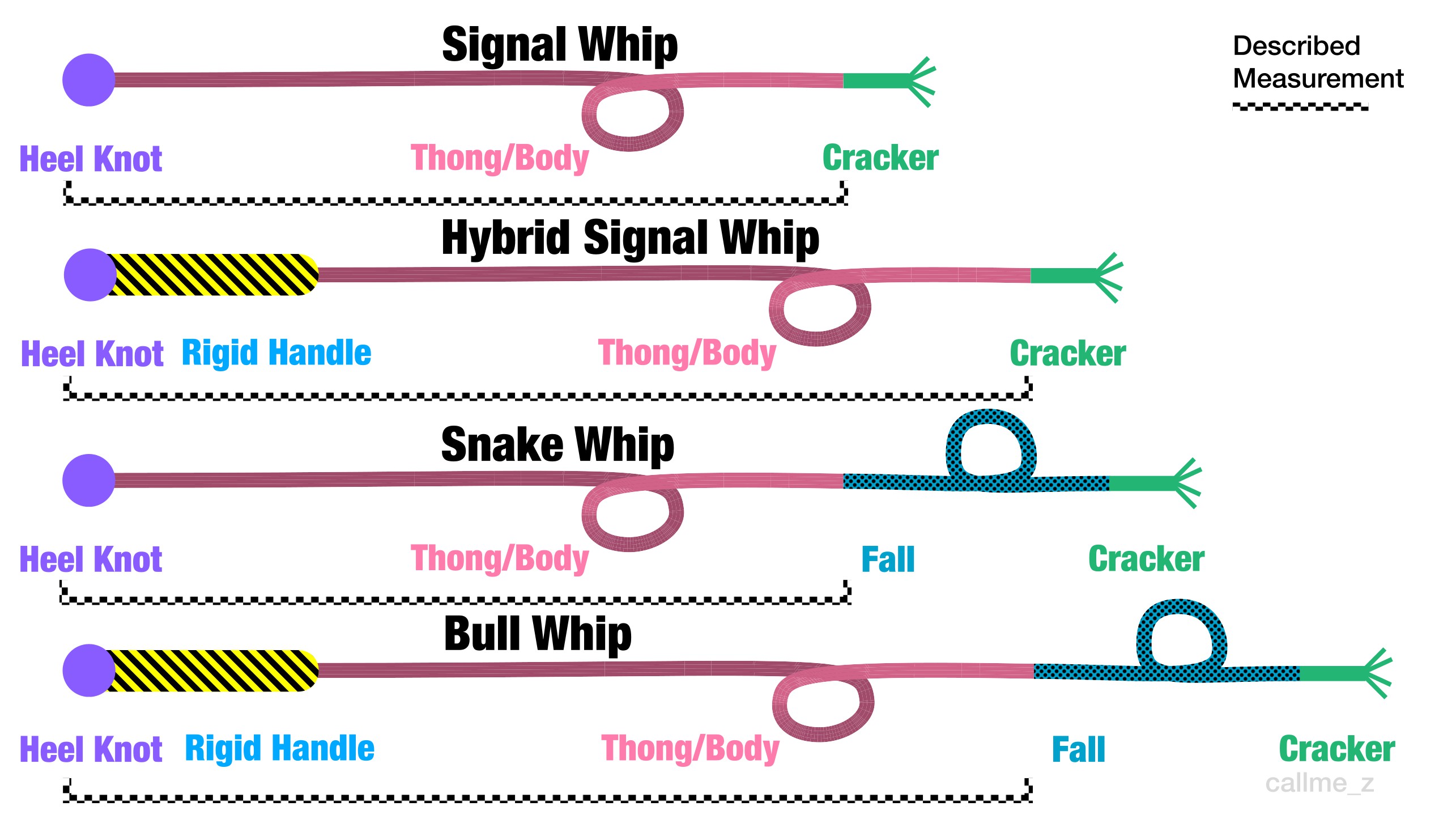
Cracking the Code
Instructors Alex and Zee (fet: CallMe_Z, email contact@call-me-z.com)
Full Slide Deck mentioned
Whip masters
- Master Robert - Fet: Robert9119
- Dex - Fet: Dex Youtube: @DexNeptune
Glossary
- Plaiting - The braiding done on the body or thong of a whip/quirt
- Fall - the soft, flexible tail or tails of a flogger, quirt, whip, etc.
- Cracker - Crackers or poppers are what actually make contact with your target.
- Belly (1) - Part of the internal structure of a whip; some whips can have multiple bellies.
- Belly (2) - The inner curve of a whip
- Spine - The other curve of the whip
Why a Quirt or Similar Toy?
Quirts, galley whips, cats, and similar are great examples of of approachable toys to start your learning journey. Quirts are more forgiving with larger strike areas, take a look at the below image for comparison the tiny cracker at the end of a 4 foot Snake whip (72") is dwarfed by the tongue on a dragon tail


Quirts, Cats, etc, are also great bang for the buck, and with their flexible handles teach you how to handle the movent of a whip. They are also great stepping stones for your scenes if you decide to add whips in later!
Whip Types

Which Whip Why?
- Shorter whips 72” (1.8m) in total length are ideal for the dungeon.
- Signal, and Hybrid Signal whips excel at Side to Side throwing
- Snake, and Bull whips with a fall flow and flourish easier
- Hybrid Signal and Bull whips with a rigid handle can feel easier to control, and be accurate with.
Foundations of a Throw
- Plant your feet, square or leading with either dominant/non dominant foot, find what’s comfortable to you
- Isolate your throwing arm
- Keep the motion mostly in your elbow, forearm, and wrist
- Keep your arm closer to your body, but don’t “lock” it in with tense muscles
- The rest of your body doesn’t contribute to the throw
- If you need help to remember, lightly hold your bicep with your non-dominant hand
- Get a secure, but not-to-tight grip on the whip.


Being a Whip Evangelist
Whip plays can be extremely nuanced, but that nuance comes with skill. Instead of asking “Where can’t I whip?” ask “Am I skilled enough to strike that area?”
What is skill?
- Accuracy
- Intensity modulation
- Strike Pathing
- Rhythm
Caring for and Storing your whips
Storing
- If you can, store them hanging up with no obstructions in a cool dry place
- If you can’t, store them flat and long
- If you can’t do that, coil them, and store them flat
Conditioning and Cleaning
- Use a simple conditioner like Picards leather dressing.
- Condition new whips every time you throw them until they’re broken in
- Once broken in, condition whips 2-3 times a year (every 3-6 months)
- Condition falls before each use
- Replace your cracker often, they are cheap
- Paracord and rubber toys can be cleaned with alcohol liberally.